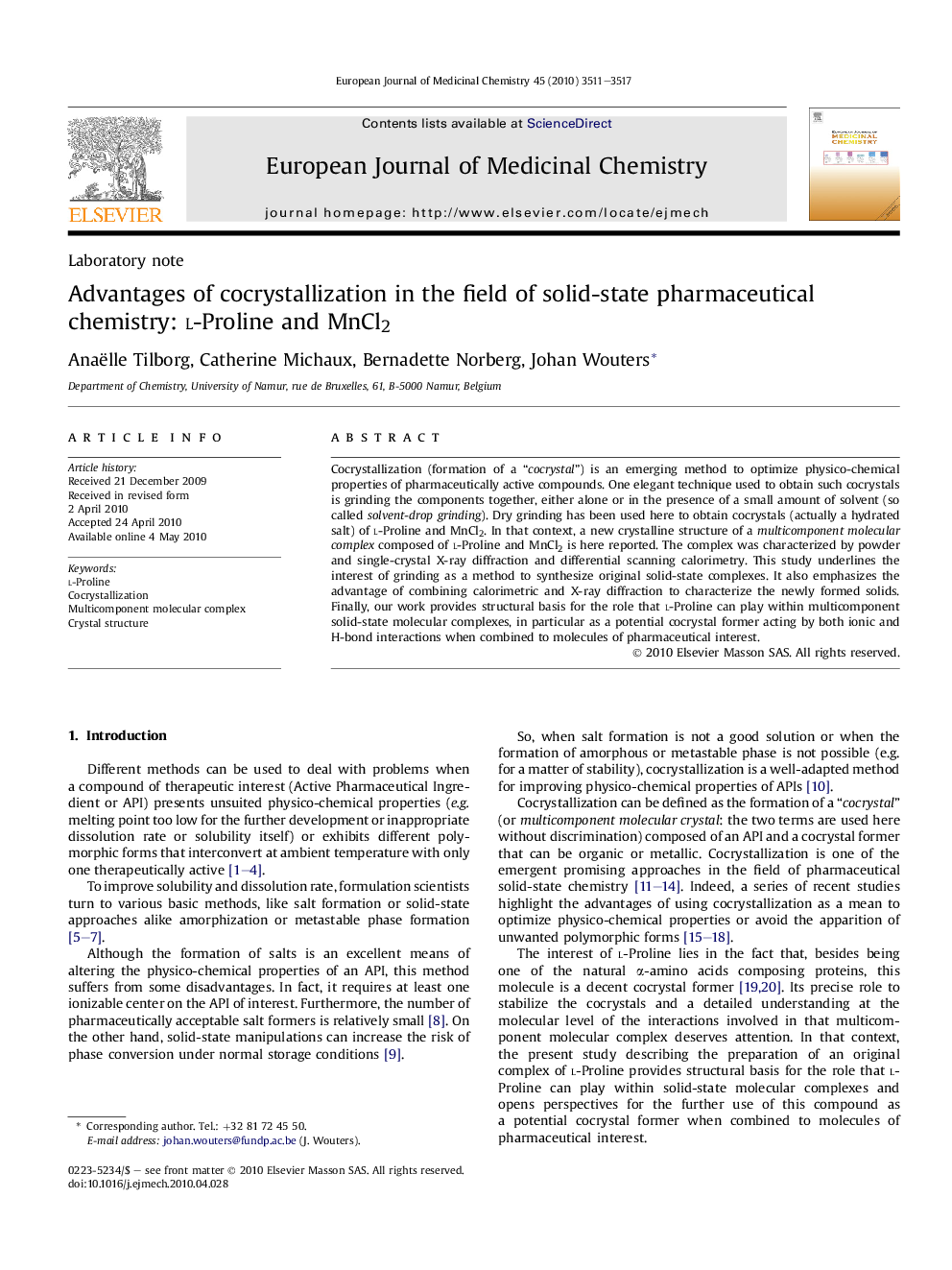| Article ID | Journal | Published Year | Pages | File Type |
|---|---|---|---|---|
| 1399511 | European Journal of Medicinal Chemistry | 2010 | 7 Pages |
Cocrystallization (formation of a “cocrystal”) is an emerging method to optimize physico-chemical properties of pharmaceutically active compounds. One elegant technique used to obtain such cocrystals is grinding the components together, either alone or in the presence of a small amount of solvent (so called solvent-drop grinding). Dry grinding has been used here to obtain cocrystals (actually a hydrated salt) of l-Proline and MnCl2. In that context, a new crystalline structure of a multicomponent molecular complex composed of l-Proline and MnCl2 is here reported. The complex was characterized by powder and single-crystal X-ray diffraction and differential scanning calorimetry. This study underlines the interest of grinding as a method to synthesize original solid-state complexes. It also emphasizes the advantage of combining calorimetric and X-ray diffraction to characterize the newly formed solids. Finally, our work provides structural basis for the role that l-Proline can play within multicomponent solid-state molecular complexes, in particular as a potential cocrystal former acting by both ionic and H-bond interactions when combined to molecules of pharmaceutical interest.
Graphical abstractDry grinding has been used here to obtain cocrystals of l-Proline and MnCl2. The complex was characterized by powder and single-crystal X-ray diffraction and differential scanning calorimetry.This contribution provides structural basis for the role that l-Proline could play within multicomponent solid-state molecular complexes, in particular as a potential cocrystal former acting by both ionic and H-bond interactions when combined to molecules of pharmaceutical interest.Figure optionsDownload full-size imageDownload as PowerPoint slide
